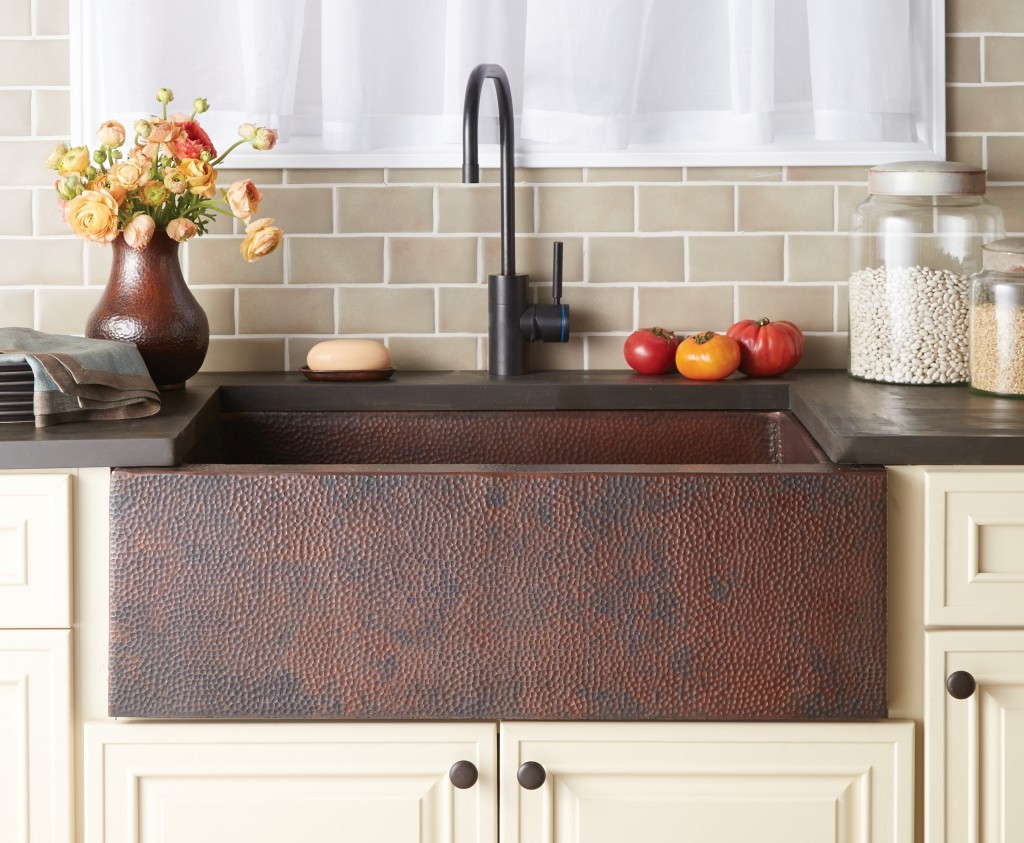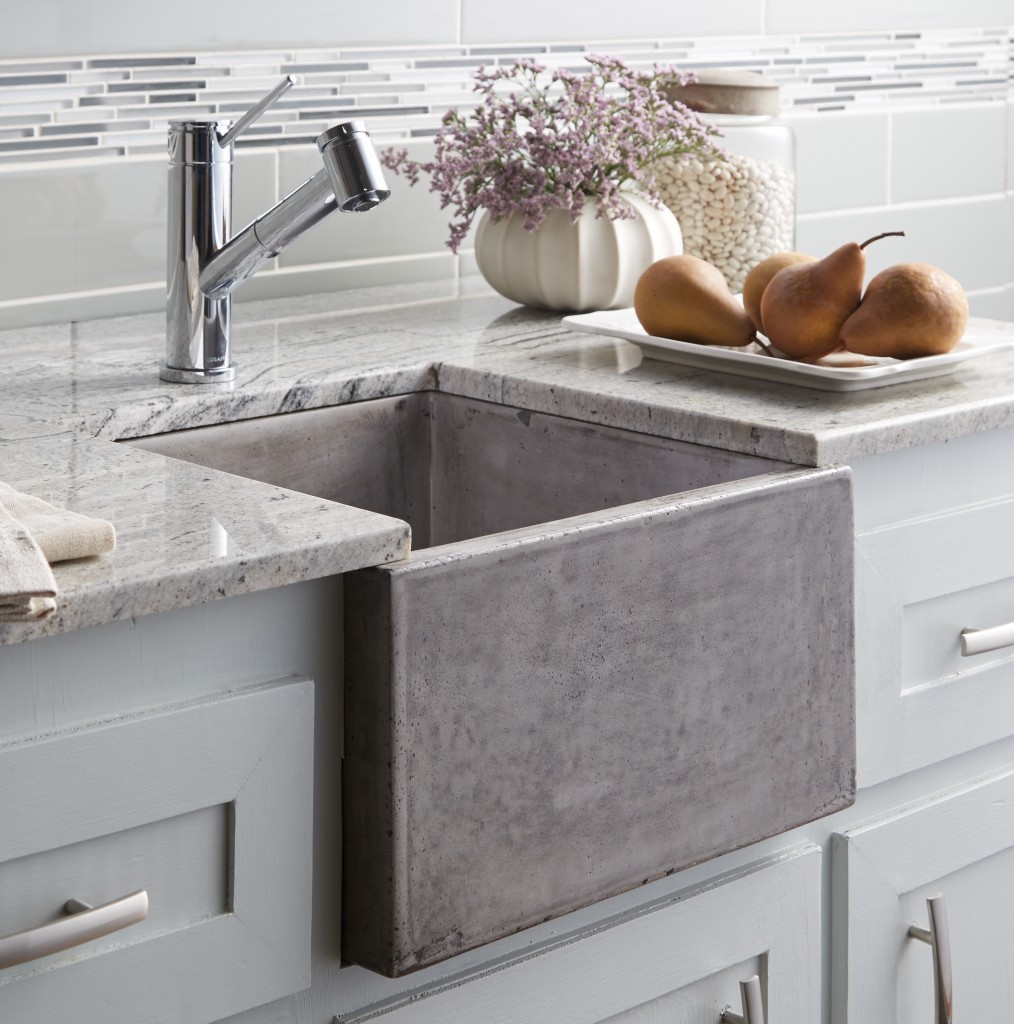Apron Sinks in the Kitchen
Ergonomics and Other Practical Benefits
Apron sinks, also known as farmhouse sinks, were often found in rural homes in decades past. The original design considered the comfort of women who spent long, long hours at the sink. It was important to them not to have to bend over. The sink’s forward orientation eliminates the counter-top that causes the user to lean forward and strain more than necessary.
Unlike recessed sinks, the apron sink sports a front that juts out slightly from the supporting cabinetry. Again, this was a practical design that helped prevent cabinet damage. Any water or suds that dripped over the lip would fall to the floor rather than puddle on cabinet countertop wood.
Another feature that differentiates the apron front is the depth of the bowl. This was a practical feature; the basin needed to be deep enough to accommodate the large pots used to prepare meals for large farm families. The depth also made it easy when there was a need to soak several pots and pans to remove food residue.
Today, the apron sink differentiates from other undermount kitchen sinks in the general design and with the choices of materials available to create the sink. Because a porcelain apron sink has a traditionally country feel, it works well in kitchens decorated to resemble the latter 19th and early 20th-century farmhouse kitchens; however, farm sinks are used in all types of design styles. Many design-forward companies are creating farmhouse sinks for transitional, contemporary, and modern designs – it is easy to find a copper farmhouse sink that fits as well into a rustic kitchen design as it does into a transitional design. Concrete apron sinks are becoming wildly popular, and their contemporary styling further expands the use of this versatile and timeless sink.


